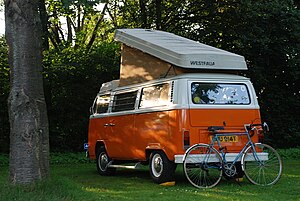Collecting our hire car at the airport, I wonder whether fuel will be cheaper on this island, renowned for its lenient taxation. I don’t have the chance to find out.
“The tank’s half full but don’t bother replenishing it before you return the car,” says the chirpy young man at the Hertz desk.
“But we’re here for five days – will that be enough?”
He smiles kindly, as one might at a child who’s just asked a sweetly naive question.
“Jersey is a small island, you know. Half a tank will last you more than twice five days.”
I accept his advice. I’m never one to rush to the petrol pump, the red zone on my fuel gauge being a familiar friend of mine – as is the area just below the letter “E” for “Empty”. This approach always makes for a more interesting journey.
Prior to our trip, I’ve read in the guide book that the roads in Jersey are very narrow. This does not worry me. Where I live in rural Gloucestershire, there are plenty of single-track roads. Provided you make a mental note of the passing places as you drive, the worst that can happen is that you have to reverse more often than you’d choose.
What I hadn’t expected was the island’s low speed limit. It’s just 40mph at its fastest, 30 or less in built-up areas and down to 15 in “Green Lanes” (whatever they are). As most of the roads are barely the width of our hired Ford Ka, I’m not sure how the road network can accommodate the cars of affluent residents. (I spot more Rolls Royces in our five days on the island than I’ve seen in Gloucestershire all year.) The few roads that are multi-laned are always packed bumper-to-bumper with slow-moving traffic.
But it doesn’t matter that every journey is slow, because the distance to be travelled is tiny. Looking at the map, you assume a trip to the other side of the island will be a pleasant day out, so it comes as a shock when you arrive at your destination in less than half an hour.
We are staying in St Helier on the south coast. The drive to the zoo, near the north coast, takes about five minutes. So although we are forced to drive slowly, it still feels as if we’re driving at great speed because we reach our destinations so quickly. Sometimes it’s not even possible to map read as fast as we travel. I feel like I’m queen of the island, I’m mistress of the entire Jersey road network.
The low speed limit also makes the island seem bigger than it really is. If we applied normal British speed restrictions, it would seem even tinier. Any small state despot should follow suit: it will make him feel much more important.
If we were using at a road map that included the European mainland visible from Jersey’s east coast, we’d soon gain a true sense of perspective. But as the only land mass on our tourist map is the island itself, it’s easy to forget how small it is – especially when the brochures are constantly boasting that we’re on the largest Channel Island.
I’m reminded of the long-suffering Miss Hardy, who had the misfortune to be my Geography teacher before the subject became cool. The environmental movement must be a gift to Geography teachers everywhere, making the subject relevant to pupils’ every day lives. I still struggle to find a practical use for my intimate knowledge of the jute production cycle. No wonder we got bored enough to play pranks, one by one hiding under the desks whenever her back was turned until the classroom seemed empty.
Despite our bad behaviour, Miss Hardy’s face would light up whenever she talked about a year she’d spent on an exchange in an Australian school. She told us once “I said to my hosts ‘You are so lucky to live on an island!’ and they said to me ‘But you do!'” What a delightfully colonial mistake to make. And if a Geography teacher can get confused about scale, I’ll not be too harsh on myself for my own misconception of Jersey.
I’m less sympathetic to the couple in front of me at the admissions desk to Jersey Museum.
“The island’s so much bigger than we thought it would be,” the woman was saying in a plaintive voice. “In one episode of Bergerac, we saw John Nettles on the north west coast, and the next minute he was in St Helier. It took us half an hour to make the same journey!”
The lady behind the desk gave a wry smile. I don’t think it was the first time she’d fielded this complaint.
“That’s just the editing,” she said patiently. “It’s what television people do.”
Good old Bergerac, he must really have boosted tourism to the island – no wonder the museum attendant rushed to his defence. But I don’t think I’d choose him as my tour guide.
Related articles
- Bergerac celebrates 30th birthday (bbc.co.uk)



